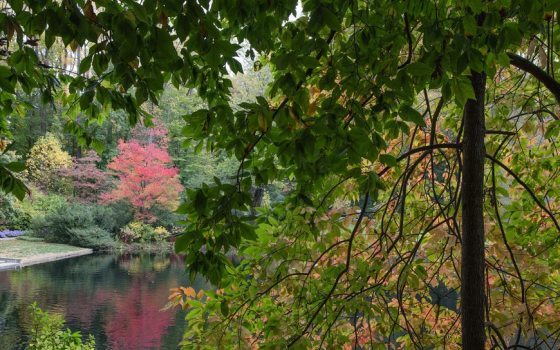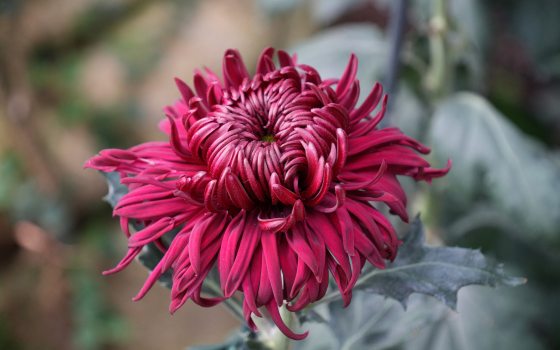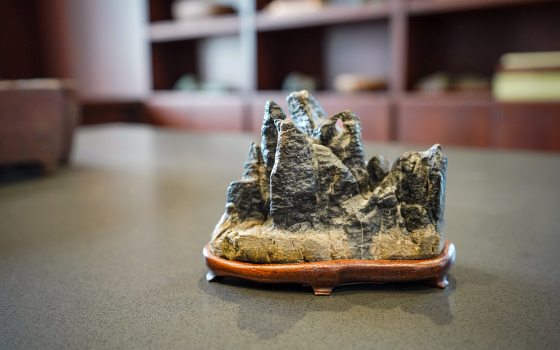As the weather turns cooler and the sun sets earlier each evening, you may be wondering when fall foliage will peak here at Longwood. Determining peak timing is not as easy as one may think … when it comes down to it, the timing depends on the weather leading up to the fall months and, as we all know, the weather can be unpredictable. As Longwood’s Arborist Manager, I’m looking forward to seeing our foliage at its peak just as much as you are. Read on to explore what determines fall color timing, learn when you can most likely see it, and discover which trees here at Longwood provide can’t-miss fall foliage, as shared by our staff.
What Determines Fall Color Timing?
The time at which leaves change each fall is correlated to a number of aspects leading up to the autumn months, as conditions during the prior summer set the stage for what we will witness during the first few weeks of sweater weather. Lower-than-average rainfall during the summer months can stress trees out, causing early leaf drop and premature color changes. Other stressors, such as insect and disease pressure, can also be detrimental to the quality and length of fall color. Ample precipitation during the summer, in contrast, helps support good tree health and leaf retention and, in return, leads to show-stopping colors during the fall.
Once the temperatures begin to fall, autumn weather takes the lead as to when peak color will happen. Beautiful reds require cold but sunny days, but wet, windy weather can prematurely knock leaves off, leaving you with a soggy mess in your yard.
What Causes Fall Color?
Don’t worry, we’ll get to the best prediction as to when you can revel in peak fall vistas at Longwood, but first, let’s take a look at the science behind what causes fall color. The length of daylight and changes in temperature cause leaves to stop producing food for the plants. During the growing season from spring through summer, leaves gradually lose chlorophyll but quickly lose much more chlorophyll right before leaf fall. As the production of chlorophyll halts, it breaks down, causing a leaf’s green color to fade. Before the leaf drops from the tree, pigments such as carotenoids (responsible for yellow colors) and anthocyanins (responsible for red colors) become more visible, and help Mother Nature put on her fall foliage show.
When Can You See Peak Fall Color?
You can find multiple sources on peak fall foliage predictions on the internet, but after talking to colleagues and paying close attention to the weather from recent cool nights to limited rain (including an increase in the number of cooler nights we experienced this past September than those during September 2019), I can predict that here at Longwood we may see peak color starting around mid- to late October.
What are Some Fall Foliage Favorites?
With our vast tree collection here at Longwood, there’s a wealth of beauty to see when the foliage starts to turn. However, I have my favorites, as do my colleagues.
Acer rubrum (red maple) has always been a favorite of mine, and one that can be seen in our Meadow Garden. Depending on the cultivar, you can see varying differences in colors ranging from a vibrant pink to even a deep reddish-purple at its peak.
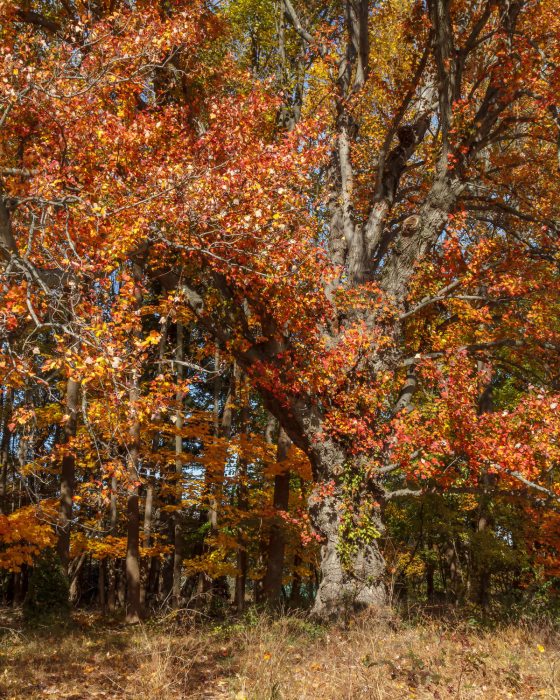
Another favorite of mine is Nyssa sylvatica (sour-gum), a member of the dogwood family that can put on a fluorescent red show! Senior Horticulturist Jessica Whitehead agrees, adding, “in addition to having many ecological benefits in the landscape, I love the bold fiery color of this native tree.”
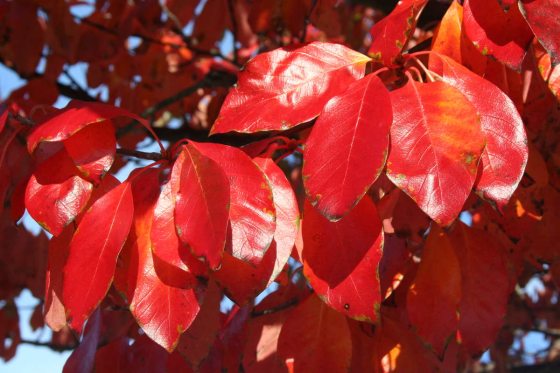
IPM Technician Beth Pantuliano cites the Acer griseum (paperbark maple) as her favorite, as she loves the “orange color and the architecture of the tree with the curling orange bark.”
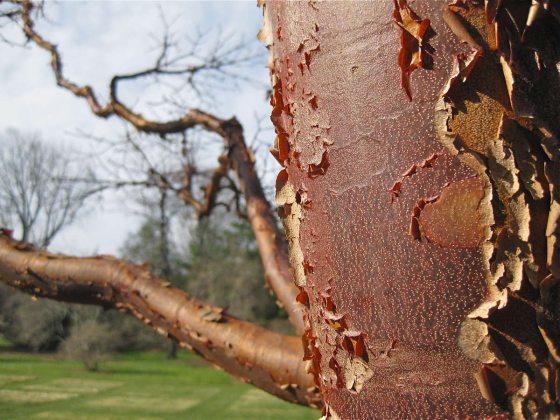
Senior Horticulturist April Bevans shares that her favorite is the Stewartia pseudocamellia (Japanese stewartia). She enjoys its “really pretty soft hues of orange and peach,” and shares that it’s “a nice small tree that is homeowner- friendly and beautifully shaped. As they age their bark becomes striated in hues of orange as well.”
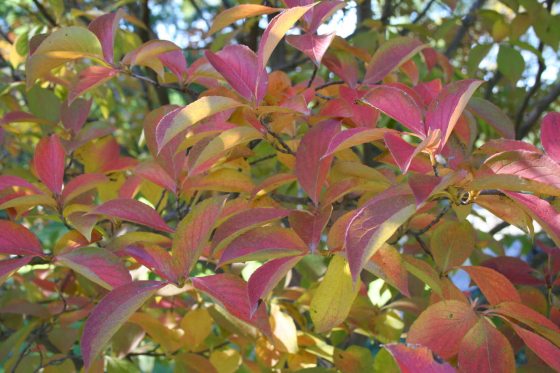
Digital Resource Manager Maureen McCadden writes that her favorite fall foliage is courtesy of the sugar maple, noting “when the weather chills, it reminds me to pull out my fleece and go outside for a little break from my desk to revel in the pre-winter beauty that Nature treats us to during this season.”

I hope you too can take a break from your daily routine and enjoy this year’s fall color. No matter when our trees reach their peak fall color, Mother Nature always provides us with quite a treat!
